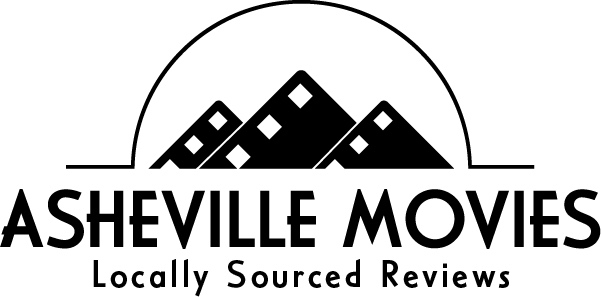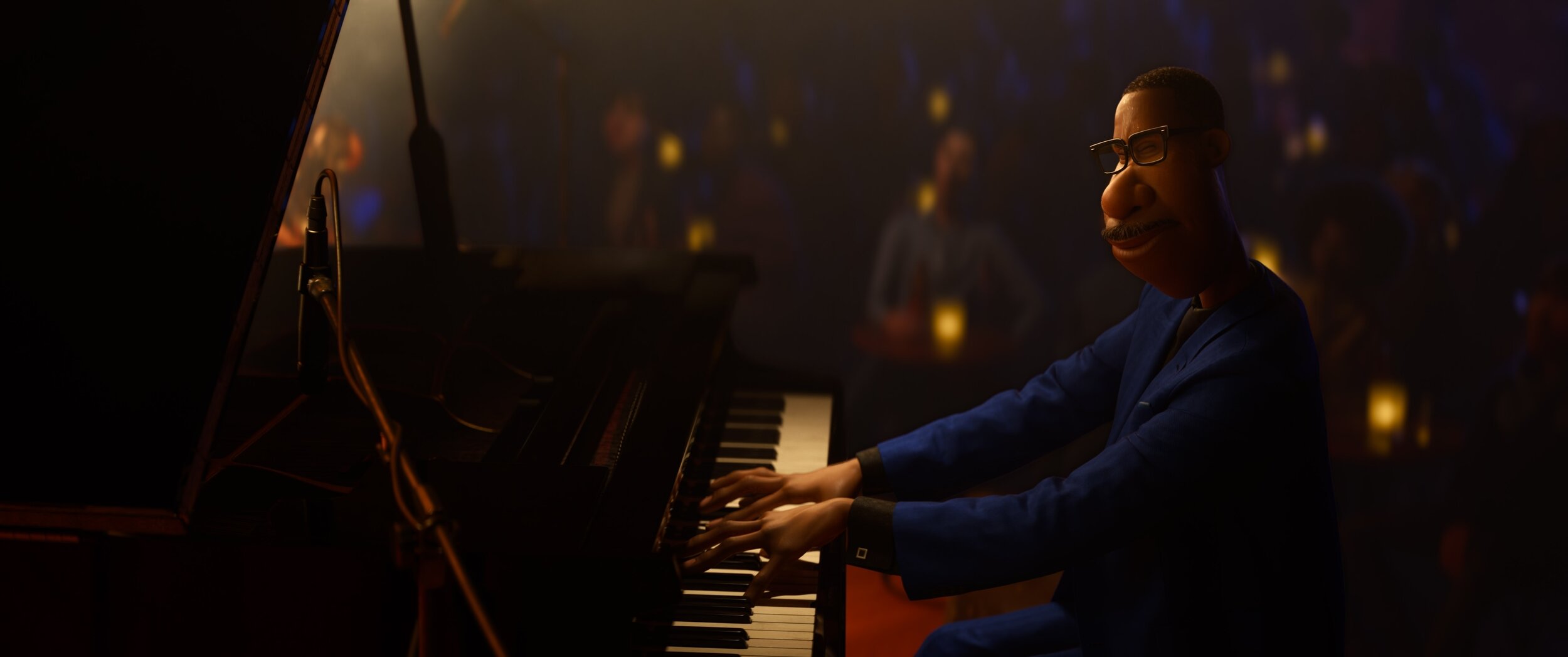Interview: 'Soul' producer Dana Murray
Most moviegoers have a general idea what film producers do — but those folks’ responsibilities on animated features feel a bit more nebulous. Fortunately, Soul producer Dana Murray is happy to provide the answers, as well as other behind-the-scenes details about the making of Pixar’s latest stunner.
One week before the film’s Christmas day release, Murray spoke with Asheville Movies about her various professional roles, the particular genius of co-writer/director Pete Docter, and responsibly going where the animation studio has never gone before.
Edwin Arnaudin: Do you have any history with Asheville?
Dana Murray: No! I'd love to go, though. I’ve heard a lot of good things about it. A lot of music, right?
EA: Yeah.
DM: Cool.
EA: Well, first off, I just wanted to know what being the producer of Soul entailed.
DM: The producer wears many hats — maybe all the hats at some point. You’re a creative partner but also…I like to explain it like I’m the protector of the film and the process. The obvious things are I’m in charge of spending the money and where we spend it, and also the schedule. This film, specifically, we had a year pulled out of the schedule, so it just heightened everything and made everything feel way harder, just because we had to figure things out faster. But I feel like it’s my responsibility to build the best team, take care of morale — all of those things. [Laughs]
EA: Very nice. Well, this being Pixar’s first feature that has a Black lead in a very Black-centric story, it feels of foremost importance to have a respectful presentation of Black culture — and I feel like that’s something y’all definitely did, at least from a white perspective. In the credits, I saw Herbie Hancock and Daveed Diggs and some other people listed as consultants, and that got me curious about what kind of insights that group provided you and the filmmakers.
Disney/Pixar
DM: We took it on as a huge responsibility to make sure that we did it right. So, we formed a “culture trust,” which consists of some of the Black employees at Pixar who became part of the process of reviewing story, character, and sets. And then we wanted to form an external group of consultants, like you mentioned: Herbie Hancock, Daveed Diggs, [Solo: A Star Wars Story and Selma cinematographer] Bradford Young. All of them brought different things, to be honest. Like, Herbie Hancock obviously brought great history to music and African American culture and the contribution of jazz to our culture. Where Daveed Diggs brought more of a story element cultural consultant. Bradford Young talked to us about lighting Black skin.
So, there was a wide range of consultants. Dr. Johnnetta Cole became kind of like our mother of cultural consultants. She actually toured us…she opened up the Smithsonian African American History Museum in D.C. for us early and toured us through there. And the history and knowledge that she brings to talking about Black culture was really key and pivotal to all the characters.
EA: Nice! And last night, I finished watching co-writer/director Kemp Powers’ other film from this year, One Night in Miami [for which Powers wrote the screenplay, based on his stage play of the same name].
DM: Oh yeah!
EA: I feel like he’s having a remarkable year and I hope he gets some recognition.
DM: I know! Also releasing on Christmas day! [Laughs] He’s being pulled in many directions right now.
EA: I imagine so! Well, also, one of my good friends is an animator and he tells me that with each new Pixar film there are technological innovations that arise, and they’re pretty much always rooted in serving the story. So, I was curious about what story elements in Soul required the team to develop new tools and tricks.
DM: Definitely The Great Before, where we kind of needed to push the boundaries technically. I’d say the Soul characters specifically — when we were researching souls, speaking with religious leaders and philosophers and all kinds of people, they use words like “ethereal” and “non-physical” and “breath-like,” “invisible.” And we were like, “OK! How are we going to put this on the screen?”
And so, we have amazing artists and technical people who really had to work together as one department and come up with the look. And we basically just start trying things, and art kind of influences the technical, and technical is kind of influencing the art. And I’d say they came up with kind of this shader that was more…like, not solid…like, fuzzy, almost gas-like that was new. But to give it some form, we added line work around the hands so that you could see form and the face. And that was key, obviously, for the animators to be able to have something to ground themselves in and to movement.
Also, the Counselors, those line characters — that was actually incredibly difficult, and we found out it was the second most difficult character of Pixar’s history, right behind Hank the octopus [from Finding Dory].
EA: OK, yeah!
DM: We thought we were handing off this gift to our character department and animators. Like, “This is going to be so easy!” And they were like…it was a nightmare. But, they also loved the nightmare. They lean in to the hardest characters — it’s fun for them.
Disney/Pixar
EA: Well, with all four of Pete Docter’s features — especially these last three — I feel like he’s able to really mine emotions in a way that you rarely see onscreen. Now, with you having seen him at work, I didn’t know if you could shed some insight on how he’s able to convey those deep, relatable feelings so well?
DM: I know! The idea always starts from somewhere super personal, and even though [Soul protagonist] Joe may not seem like [Pete], there’s a lot of things that he relates to with Joe. It started from a personal place of…after Inside Out, this film that got so much attention, had great box office, had critical acclaim…he kind of just felt afterwards, like, “Oh my God! I’ve been spending my whole life on animation. Is this what I’m supposed to be doing with my limited time on Earth?” So it started there, and also thinking about his kids and when they were born, they showed up with these distinct personalities, and so those two things kind of were the birth of this idea. But, yeah, he’s just really good at getting to the core of asking these big questions that I think we all ask at some point, so they’re relatable yet personal.
EA: And obviously, Soul would ideally have been in theaters this year at various points, and I am glad that a lot of people will get to experience it at home in a week. But with that and with Disney announcing its bit slate for Disney+ over the next few years, what’s the general feeling among you and your colleagues about Pixar’s theatrical future?
DM: We very much still have a theatrical future. All the markets in parts of the world that are opening up, they’re showing that people want to go to the theater. I think we all miss that communal experience of watching a film in the dark with a bunch of strangers. But we’re incredibly grateful to have Disney+ as a platform right now. Obviously, we weren’t even sure at one point if anyone was going to see the film. But we are creating more content for Disney+, which is allowing some really cool things at Pixar — like allowing a lot of new voices and more diverse voices coming up the ranks, so I think you’re going to see more in both theatrical and streaming.
EA: Well, I’m definitely looking forward to all of that, and I think y’all did an amazing job on Soul. It’s my favorite film of the year right now and I don’t know that it’s going to get knocked off, so I’d say start practicing your Oscar speech.
DM: Oh! You’re very kind. Thank you so much. [Laughs]
(Photo by Deborah Coleman / Pixar)






